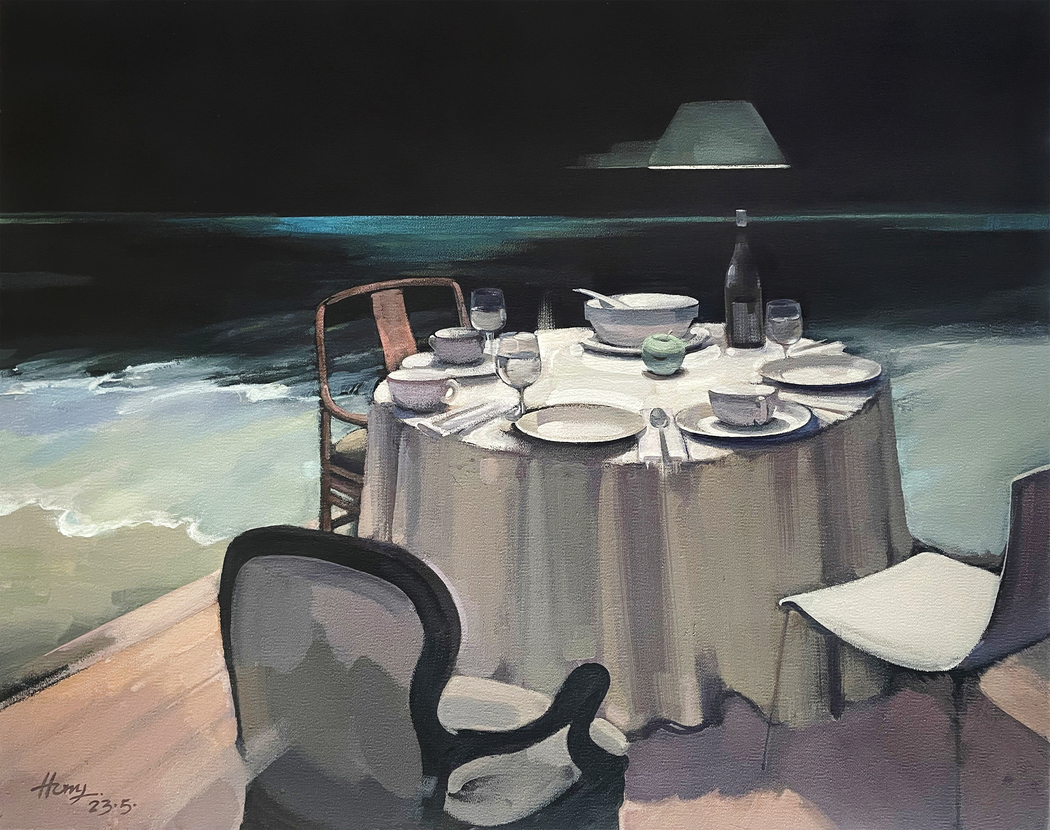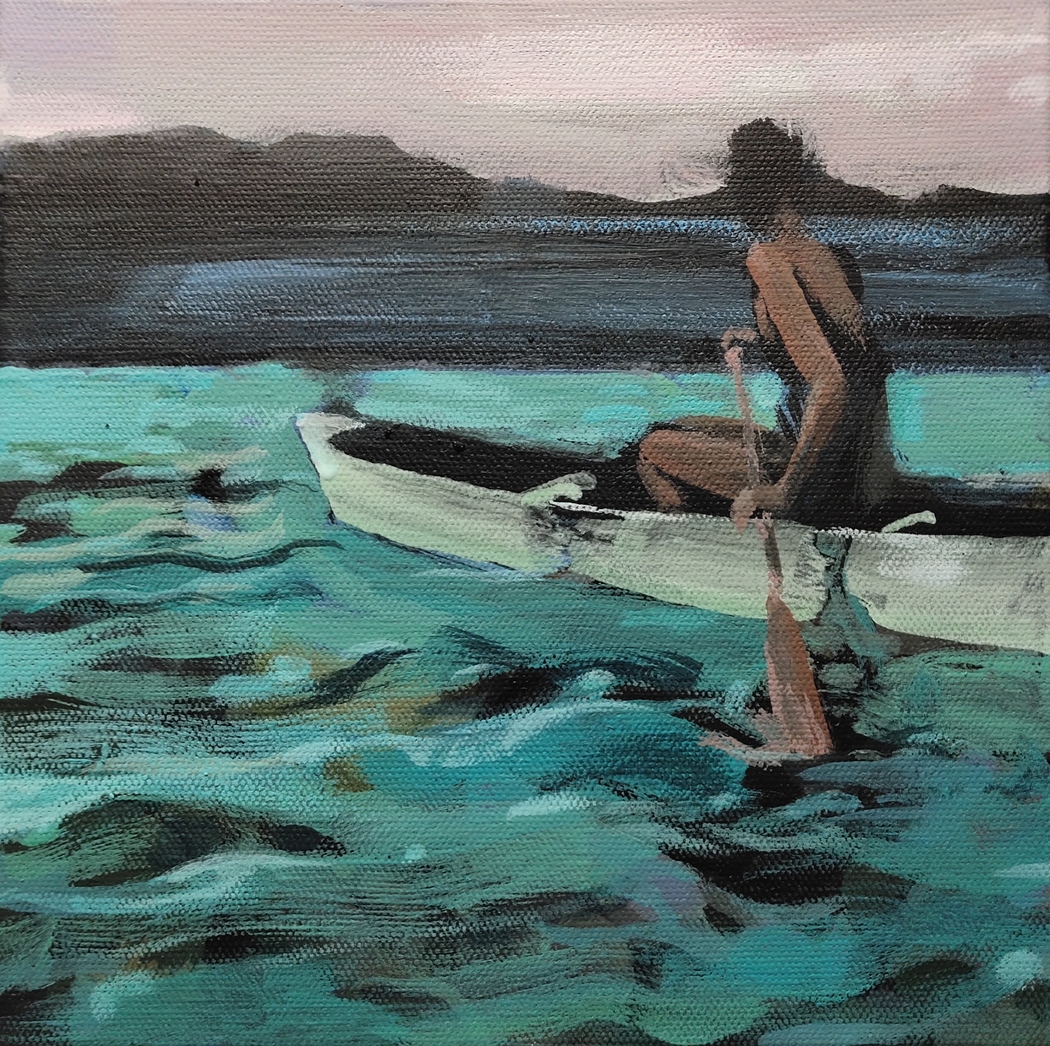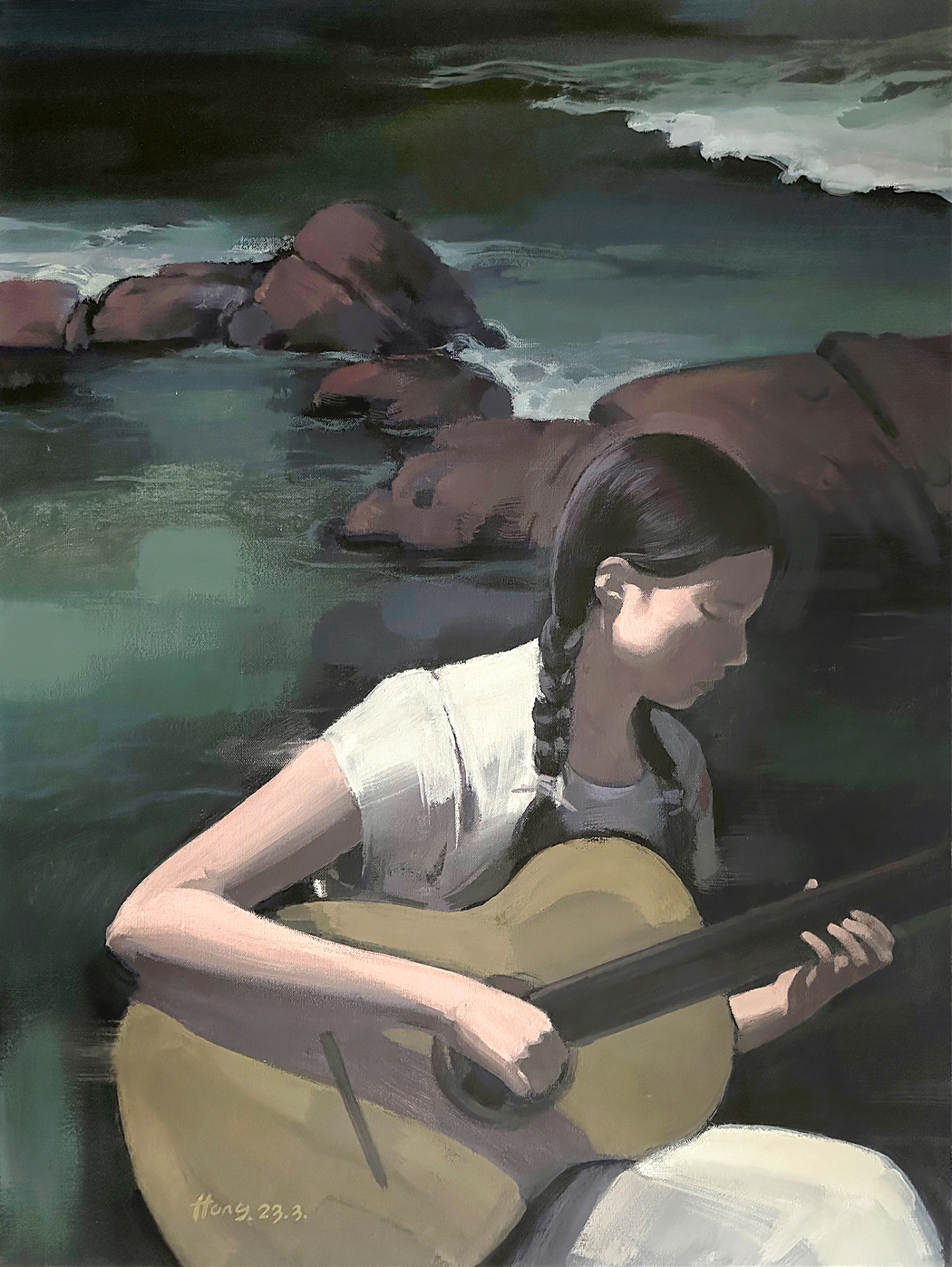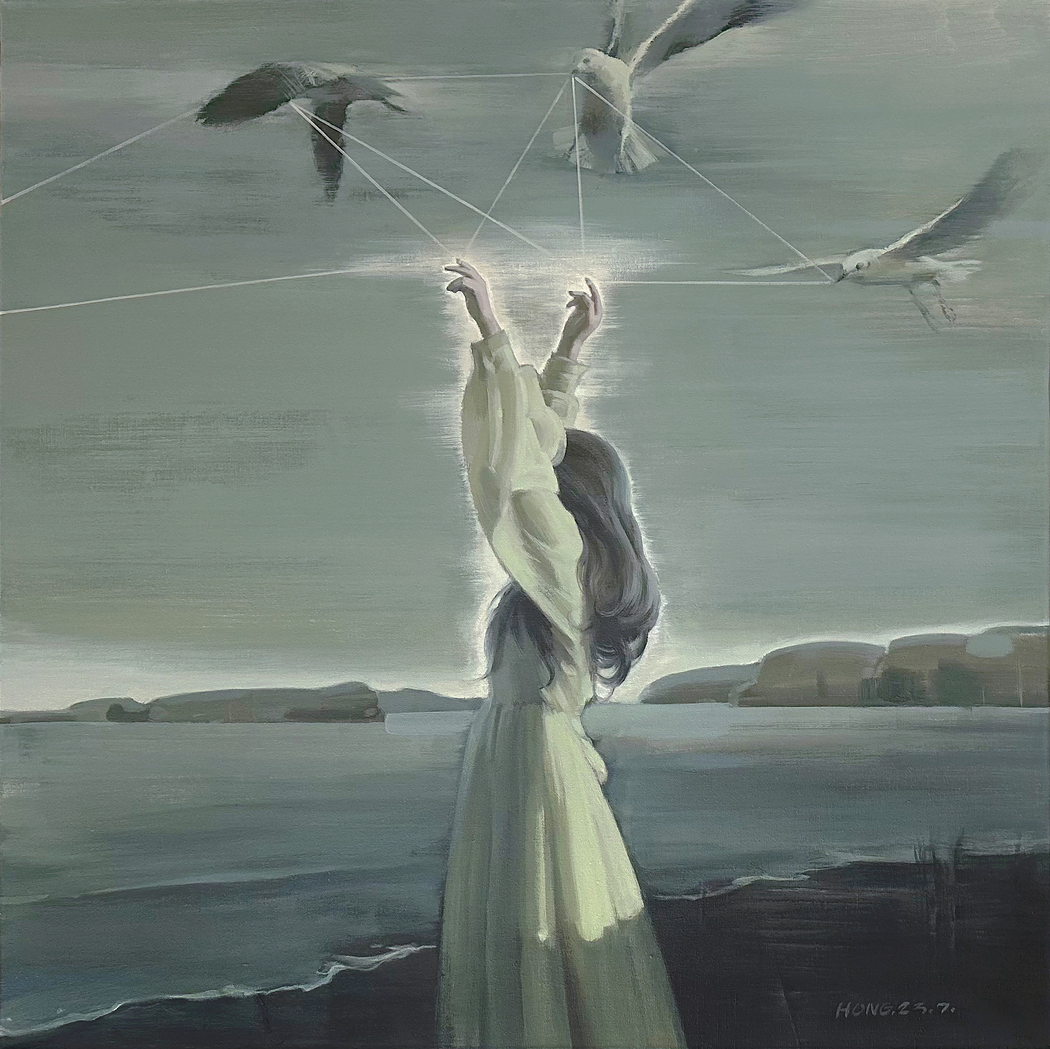Wang Jianhong
Your work often emphasizes the connection between humans and nature. Can you tell us how you develop this theme in your paintings?
In 2020, the epidemic spread, and people came to the jungle, the mountains, the suburban wilderness to “take refuge in nature,” hiking for fitness and finding comfort. People realized that nature is the most worthy of attachment. This also inspired me to pay attention to the relationship between nature and people, and to integrate it into my painting creation. The performance of sacred and eternal life must be the priority of landscape painting, and I aim to show this through personalized language. I focus on the interaction with nature, reflecting the human dependence on and respect for it in our life, culture, and art, leading to introspection and kindness toward nature, binding us with fate to achieve a true sense of harmony with it.
 Wang Jianhong | Melting | 2023
Wang Jianhong | Melting | 2023
As a member of both the Canadian Artists Association and the Vancouver Chinese Artists Association, how do you navigate the fusion of different cultural influences in your work?
The transition between different contexts and the collision of different cultures is a challenge in itself. Painting builds its own territory in these changes, creating an attitude towards life and helping me find myself. It is interesting and meaningful to adopt a more global approach to art style, and finding a highly recognizable new art form is worth exploring. It is not confined by Eastern or Western traditions, allowing art to become more diversified and healthier. Artistic creation should be rooted in my own identity. I am constantly switching between worlds, experiencing the outside world with a patriotic feeling while finding my own artistic resources. I explore new ideas of artistic creation in the context of East and West, aiming to be a builder of different cultures and bridges.
 Wang Jianhong | The other shore | 2023
Wang Jianhong | The other shore | 2023
In 2024, you won first place at the Canadian Landscape Exhibition. How do you approach landscape painting, and what challenges do you encounter?
Of course, everyone will have a different understanding of a landscape. What you see may ignite mystery and the desire to explore, while someone else may feel terror or repression from the same picture, as people have different opinions and judgments on the meaning of life. Kenneth Clark, an art historian, said, “Maybe nothing unites people together more than a good sight.” I believe that landscapes with “love” in the “scenery” have a more powerful appeal. Most of us, especially those who love art, come to Vancouver to meet challenges, create, and appreciate beautiful scenery, which aligns with our desires for superior living environments.
Your paintings seem to reflect not only nature’s beauty but also deeper philosophical reflections. How do you balance aesthetic beauty with the introspective elements of your work?
Thinking and observing bring us closer to nature and allow us to hear its sounds. Appreciating excellent landscapes helps us find our own way to express the colorful spiritual world. Landscapes have important elements: to show the majesty and sacredness of the forest, necessary material reorganization is required. Through thematic implications, construction, and rendering, including exaggerated color contrasts, a strong and distinct visual impact is created. This leads to spiritual communication and resonance with the audience, while making the work full of musical and poetic rhythm.
 Wang Jianhong | Chord | 2023
Wang Jianhong | Chord | 2023
What techniques or materials do you find most essential in your creative process, and how have they evolved over time?
Each creation and every piece of work should be viewed as an attempt and exploration. Each picture, every detail, should be readable. Over time, creative ideas will evolve, and innovation becomes necessary. If we only rigidly adhere to history, genres, or techniques, inspiration will be stifled, creative thinking will be limited, and independent art will not flourish. The artist’s creation must truly reveal the heart—this is your magic weapon. Combined with experienced judgment, it will lead to wonderful results. Sometimes, seizing this emotional connection is more important than just mastering artistic techniques.
Your work has been described as reflecting “humanistic care.” Can you elaborate on what this means to you in the context of your art?
In turbulent times, everyone yearns for art to bring warmth, peace, and harmony, but this mindset is established after enduring storms. The ups and downs of the times, social changes, and different ideologies impact people, touching the soul and influencing creative moods. Therefore, the best state of your work should include individual elements plus the context of the times. Every choice in art, from observation and thinking to performance, combines art with life. Focusing on the mutual influence between humans and nature, humans and society, makes the process of art and life interconnected. Every achievement is a deep experience, and art, like mountain climbing or surfing, reflects the richness of life practice.
 Wang Jianhong | Flutter | 2023
Wang Jianhong | Flutter | 2023
You’ve participated in both domestic and international exhibitions. How does exhibiting your work in different cultural settings affect the way you think about your art?
Avoiding plagiarism and imitation is essential in my work. Without any hint of ingratiation, I focus on the potential value. There’s no obvious ethnic tendency or specific cultural attribute, but rather an attempt to absorb and integrate the essence of Eastern and Western cultures. It’s consensus-based and international. I don’t concern myself with what previous masters have said or set fixed styles for myself. Every artist’s life is vivid, and each perspective is unique and valuable. Every moment of life should be a dance, and every artist represents a palette of vivid colors. Each era will flourish in a riot of color.

Leave a Reply